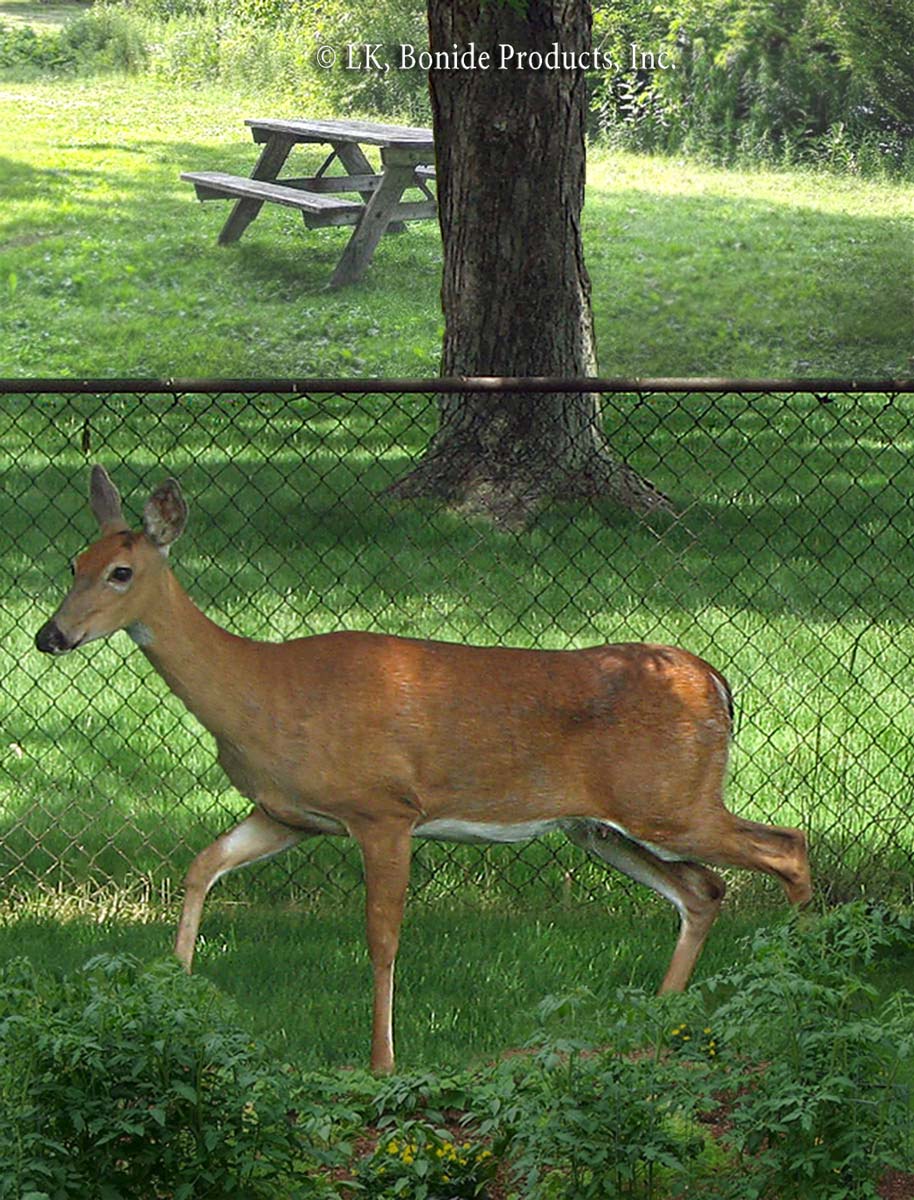
Deer are graceful animals that can wreck a garden in no time by nipping off blossoms and nibbling tender leaves and shoots. Fond of many flowering plants, deer also enjoy the foliage and fruit of just about anything you grow for your table. The types of plants most at risk will vary, depending on what the local deer like at the given moment (their tastes often change over time) and how hungry they are. As wild vegetation dries out, the animals spend more time foraging in gardens. The chewed plant parts have jagged edges. Tree limbs may be gouged where males have used them for antler polishing. Deer tend to establish trails, feeding mainly at dawn and dusk.
Fencing is the best way to protect plants from deer but often it is not possible due to feasibility or local rules. If fencing the entire garden isn’t practical, you can set up barriers and use repellents around individual plants or garden beds. Fencing combined with barrier repellents can also be considered. Rotating different repellents helps to prevent acclamation to any one type.
If fencing can be built it should be at least 8 feet high on level ground, even higher on a slope. As an alternative to a tall fence, try two parallel 4 foot high fences spaced 5 feet apart. Wire mesh is the fencing material of choice, since deer can maneuver through 12 inch gaps between boards or wire strands.
Before planting a new garden and/or adding or replacing plants consider consulting your Cooperative Extension office for a listing of plants unattractive to local deer.




